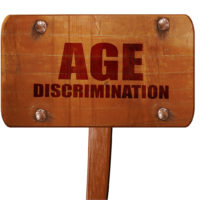What Is Age Harassment In the Workplace

The Age Discrimination in Employment Act (“ADEA”), which is federal law, and the Florida Civil Rights Act (“FCRA”), which is Florida law, prohibit an employer from discriminating against an individual in employment practices because of such individual’s age. Courts have determined that the legal standards which govern age claims under the ADEA also govern age claims under the FCRA. The protected age class under the ADEA and FCRA includes individuals over the age of 40. In other words, an individual must be at least 40 years of age in order to be protected against age discrimination by the ADEA and FCRA.
Just as employees are protected against sexual harassment and racial harassment in the workplace under Florida and federal law, employees are protected against age harassment in the workplace by the ADEA and FCRA. Courts analyze age-based harassment claims under the same legal standard used to analyze sexual harassment and racial harassment claims.
Age harassment which is sufficiently severe or pervasive to create a hostile working environment is unlawful. Age harassment includes ageist remarks, age-based insults, age-based slurs, age-based jokes, age-based derogatory remarks, and treating the individual differently or less favorably from substantially younger employees. In lawsuits involving age harassment in the workplace, victims have asserted age harassment claims against an employer based on a broad range of abusive remarks, including, but not limited to:
- Calling the victim old, old man, old lady, grandpa, and granny.
- Comments about the victim’s age interfering with his or her ability to work or do the job, such as at the victim’s age he or she should not be working, the victim is too old to work or too old for the job, the victim is getting old, and the victim cannot do the job because he or she is too old.
- Age stereotyping comments, such as the victim is inflexible, behind the times, lacks energy or initiative, burned out, and unwilling or unable to adapt to change.
- Comments about the victim’s retirement status, such as the victim should retire or should be retired.
- Comments about not wanting older employees and wanting to get rid of older employees.
- Comments about preferring younger workers and wanting to hire younger employees.
- Comments about the alleged declining physical abilities of the victim, such as derogatory remarks about their eyesight, hearing, energy, walking, or talking.
- Mocking the way the victim talks or walks.
- Comments about the victim needing a wheelchair, walker, or cane.
Age harassment also includes any physical behavior towards the victim, such as hitting or pushing the victim, throwing objects at the victim, and threatening the victim with bodily harm.
Prohibited age-based harassing behavior in the workplace also includes conduct which occurs in the victim’s presence but does not necessarily target the victim. This means that a victim of age harassment need not have been the direct target of the harassing behavior and may base his or her claim on the harassment of others in supporting a claim of age harassment. For example, the harasser makes derogatory age remarks about other employees in the workplace, customers or clients of the employer, or older workers in general. The harassment of others contributes to the overall hostility of the working environment for the victim and becomes part of the hostile work environment.
An employer’s liability for hostile work environment age-based harassment depends on whether the harasser is a co-worker of the victim or a supervisor of the victim. When the harasser is a co-worker, the victim has the burden of proof in establishing the employer’s liability. The victim must demonstrate that the employer knew or should have known of the harassment but failed to take prompt and effective remedial action to prevent the harassment from reoccurring. When the harasser is a supervisor of the victim, the U.S. Supreme Court has established a two-part test regarding what the employer must prove in order to avoid liability for a claim of supervisor hostile work environment age-based harassment. Under this two-part test, the employer has the burden of proof in establishing that the employer is not liable for the hostile work environment age-based harassment.
When an employee is subjected to age-based harassment by a supervisor, the harassment will sometimes involve the taking of a tangible employment action against the employee. A tangible employment action includes reduction in pay or hours, demotion, failure to promote, termination, and other employment decisions that inflict direct economic harm against the employee. When the age-based harassment involves a tangible employment action against the employee, the two-part test established by the U.S. Supreme Court regarding employer liability for age harassment by a supervisor does not apply. Rather, when the supervisor’s age harassment involves the taking of a tangible employment action against the employee, the U.S. Supreme Court has determined that the employer is automatically liable for the supervisor’s hostile work environment age-based harassment.
We have extensive experience representing employees who have been the subjected to age harassment and other types of harassment in the workplace. If you have been subjected to age harassment or have any questions regarding age harassment in the workplace, please contact our office for a free consultation.
